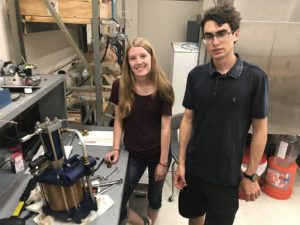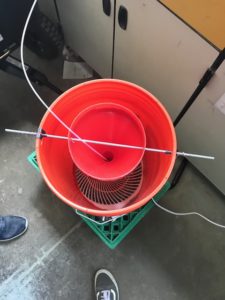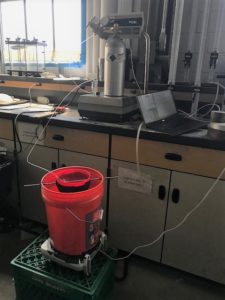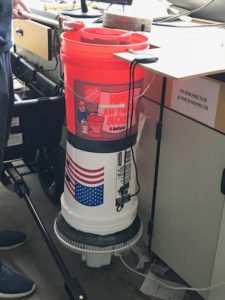This week of my internship was probably the best thus far. In the lab, we accomplished a lot and were really able to tackle some of the biggest issues we have faced. Outside of the lab, I have continued to explore the Salt Lake City area and gotten to know the city much better.
Monday began with configuring a third Xbee unit. We then daisy chained them so we could reach a further distance to report data. After we established that this worked, we tested their timing to make sure that their reporting times did not differ significantly. To do this, we went outside and daisy chained them. Then we caused temperature spikes by placing them in ice water as we could not warm them any more than the outside temperature. Luckily, the spikes lined up so we did not have to do any additional programming. That afternoon, Aaron began to teach us Bash programming, which is a Unix shell command language used on Mac computers.
Tuesday we mapped out the office suite for light switches and outlets in preparation for testing the breakers and replacing the light fixtures. We then worked with CoolTerm, the serial port monitor we use to collect data through the Xbees, to get it to create new text files for the data every so often without human intervention.
On Wednesday, we helped Eric rebuild a CO2 pump and clean up his lab. The CO2 pump is used to run experiments that test the fracturing point of rocks under pressure. We then looked into fill stations for CO2 tanks that we need for our experiment with Aaron. That afternoon, we built a mock vent for our bench scale experiment. To build the vent, we attached a traffic cone to a funnel and ran a tube with a diffuser on the end through it. We then attached this to a five-gallon bucket with the bottom cut off.
Finally, we attached the bucket to a fan. This was accomplished using a lot of duct tape and wire. This set up mimics the vent on the Student Union roof and allows us to simulate the experiment that Aaron hopes to run up there.
Thursday, Aaron showed us how to calibrate the Picarro using known values of CO2 and Methane. The Picarro measures and analyzes the amount of CO2, CH4, and water vapor in the air and it is a crucial part of our experiment. After getting everything set up in the Geotech lab, Spencer and I began the bench scale experiments. We ran six experiments, changing one variable at a time.
The variables being changed were the fan speed and the flow rate of CO2. We tested a high and low fan speed and three different flow rates. We tracked the velocity of the air flowing out of the mock vent using an anemometer, measured the concentration of CO2 using the Picarro and monitored the mass change of the CO2 tank to get a mass flux.
Friday morning we began averaging the data we collected on Thursday. We then improved the vent by adding a second bucket to the bottom of the first in an attempt to get more mixing
between the ambient air and the CO2. We then ran the same six experiments we ran the day before, yet this time with a few mishaps–namely the fan and traffic cone detaching (easily fixed with more duct tape). We finished off the week by averaging the data from those experiments. That night, I met my cousin, who was in town for her college orientation, for dinner.
Saturday was pretty mellow. Valerie made a pancake breakfast before we headed to the Natural History Museum on campus. That evening, we went to the Sports Complex and I went skating again.
It is hard to believe that I only have two weeks left, but I intend to make the most of every day to come.





There are no comments published yet.